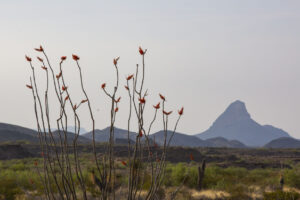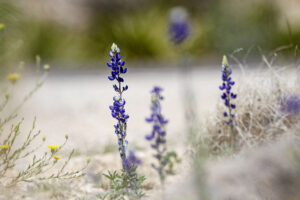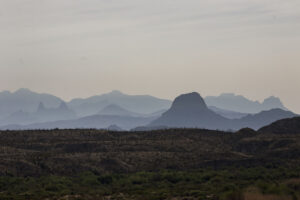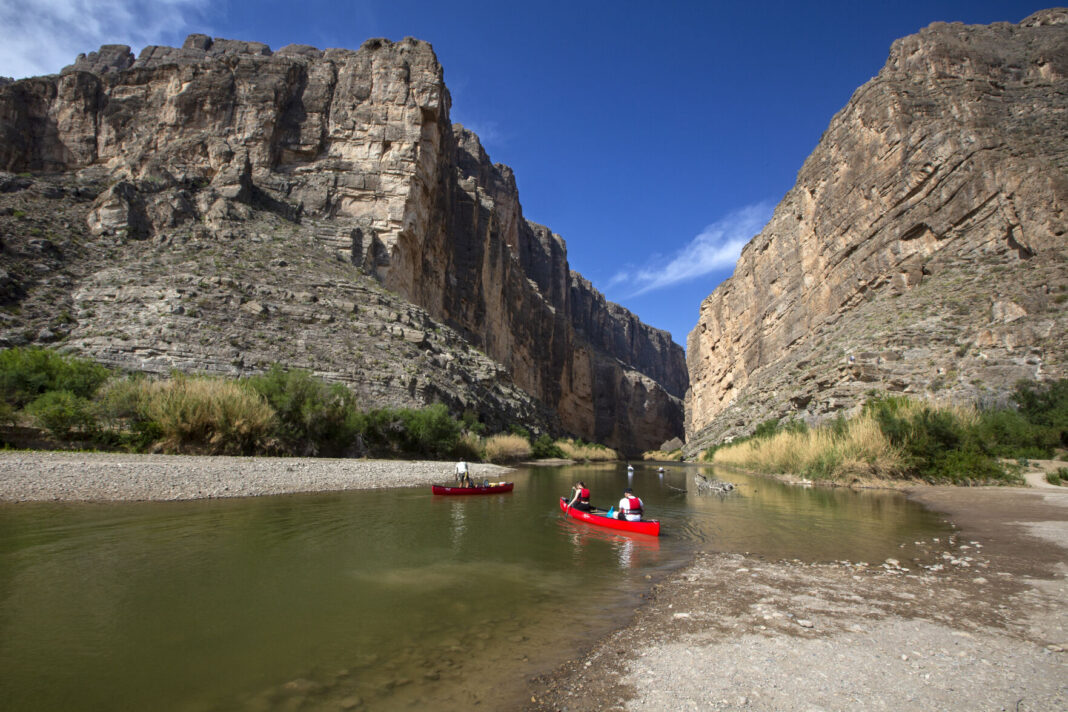The uniqueness of West Texas’ own Big Bend National Park is that it is practically three different parks combined all into one.

(Jacob Ford | Odessa American)
From the Chihuahuan desert to the volcanic Chisos Mountains landscape to the waters of the Rio Grande, there are a multitude of different habitats located within the large, vast area of the state.
Today, Big Bend ranks as one of the top vacation destinations in the state of Texas as well as the country as 450,000 visitors make their way over to experience the scenic vistas, different wildlife and outdoor adventure.
“I think it is the variety that we offer here,” Big Bend supervisory park ranger Annie Gilliand said. “We have the river, the desert and the mountains. You can explore the different habitats within the park. You can do a river trip on a boat. You can go hiking. You can go back-country camping. There’s just a lot of opportunities and many miles of trails to hike.”
While April remains to be a busy month with a high number of tourists visiting the park, Gilliand said fall is also one of the busiest times of the year, in addition to March which sees a lot of people come by due to spring break.
Summers, meanwhile, remain calm.
“Fall and spring in general are busy times,” Gilliand said. “March is the highest visitation for sure. Summer is a calmer season because it’s pretty hot. I would say that fall and some of winter would be the highest visitation.”
This past year, Gilliand said, has seen some of the highest numbers of visitors on record as people, weary from COVID-19 shutdowns, look to cure cabin fever by coming to Big Bend and experiencing the great outdoors.

(Jacob Ford | Odessa American)
“A lot of people just wanted to get out,” Gilliand said. “A lot of people that didn’t normally go to national parks did come out here and we’re glad they found their park.”
While Big Bend did shut down for about two months last year when everything else got shut down from the spread of the pandemic, the park has long since reopened.
“There were COVID cases amongst the staff so we had to keep it from spreading,” Gilliand said.
Still, some parts of the park remain closed, either due to COVID or because of the current wildfire that is currently affecting the Chisos Basin.
A wildfire in the south rim area of the Chisos Mountains has resulted in the closure of the Chisos Basin, which includes Chisos Basin Road, campground, lodge and trails.
As far as COVID restrictions go, the maximum group size is eight people.
Rio Grande Village and Cottonwood campgrounds are open with reservations required.
Back country campsites are open with reservations also required.
The Hot Springs Historic Area and associated trails are closed to entry at this time.
The Boquillas port of entry is also closed with no access to the village of Boquillas. The closure is part of the ongoing department of Homeland Security closure of the Canada and Mexico borders and there’s no timetable of when the crossing will reopen, according to the park’s website.
Visitor centers are also closed.

(Jacob Ford | Odessa American)
“Most things are opened here now but we did phase things back in,” Gilliand said. “You just can’t go inside all the buildings here but all the trails are opened, all the lodges are open except for the fire right now. Some of the places have limits on how many people can be inside but outside is limitless.”
Big Bend’s varied habitats have given the park a diverse wildlife which includes over 10 species of amphibians, 56 species of reptiles, 40 species of fish, 75 species of mammals and more than 400 species of birds.
Two of the common mammals seen in the park, according to Gilliand, are javelinas and coyotes.
“We get some questions about them,” Gilliand said. “We have lots of javelinas and coyotes and road runners. Smaller things like lizards and snakes.”
Further up in the mountains are black bears and mountain lions.
“Those are ones we get asked about a lot,” Gilliand said. “We have a lot of biodiversity here.”
With so many different species of birds reported in the area, birding has become one major activity in the park, due to its location on a significant migration route, the southern U.S. latitude and proximity to Mexico.
“We’re right on the edge of a lot of species that typically live east of here,” Gilliand said. “They’ll come to Big Bend as part of their migration patterns. The same thing with species that live to the south, west and north of here so we’re kind of this transition zone where a lot of things end up here from different parts. You see a lot of animals here that you don’t see in other parts of the country. There’s some endemic species here. There are different types of birds here. Because of the variety of habitats here, they can either live on the desert floor but they can also escape to the cooler mountain air.”
There are also about 3,600 species of insects at Big Bend National Park including butterflies, dragonflies, spiders and grasshoppers.
“There are over 400 species of birds and the most species of bats at any national park,” Gilliand said. “The most types of insects. You can see a lot of what you don’t see in the rest of America.”
As far as plants go, there are over 1,200 species of plants found within Big Bend National Park, a major feat considering the park’s hot, dry desert climate.
Despite that, cactus remains the dominant plant in the area.
“We have tons of cactus,” Gilliand said. “We have the most cacti species of any national park. Some of them are very pretty right now.”
The park also contains different types of yucca.
“They are all still in bloom right now,” Gilliand said. “It’s really cool. We also get asked about the ocotillo. People don’t know what it is. It has red flowers on the end. That’s the main desert scrub but up in the Chisos, there’s some oak and some of the southernmost aspen trees in the world. There’s a lot of diversity.”
While the fire in the Chisos has made things complicated for visitors, Gilliand said the fire is currently being contained.
After breaking out last week, the entire Chisos Basin had to be closed with fire crews working to put it out.
“Luckily, there’s other areas that people can go hiking at,” Gilliand said. “Right now, it’s about 35 percent contained. It contained itself on both sides. But there is a main area they’re working on to keep from spreading. It’s not super intense which is good. It’s in a mosaic pattern. It will renew things because it’s not killing every tree and plant.”
As people vacation to the park, some guide companies, such as Far West Texas Outfitters in Presidio, help run trips on the river, primarily in the national and state parks.
“We do tours and hikes,” Far West Texas Outfitters owner Mike Naccarato said. “Being a small company, our mission is to do customized adventures and trips. We don’t stick to one specific thing.”
According to Naccarato, some of the more popular activities they do is boating, though it usually depends on the time of the year.
“The nature of this river, it changes with the seasons,” Naccarato said. “Right now, we’re at very low water. In the fall, we’ll have more water in the rivers. Right now, we’re running multi-day trips. As we get into the fall, we’ll run longer trips since the water runs better.”
However with the summer months approaching, the number of campouts might decrease for them until the fall.
“We’re on the last little leg of great weather here,” Naccarato said. “It’s about to be in the triple digits for a good, long, while. We’re still doing overnights but I would assume in a month, it’s going to get too uncomfortable to go camping. Once it gets hot, the only activity that’s safe is boating or getting on the water.”




